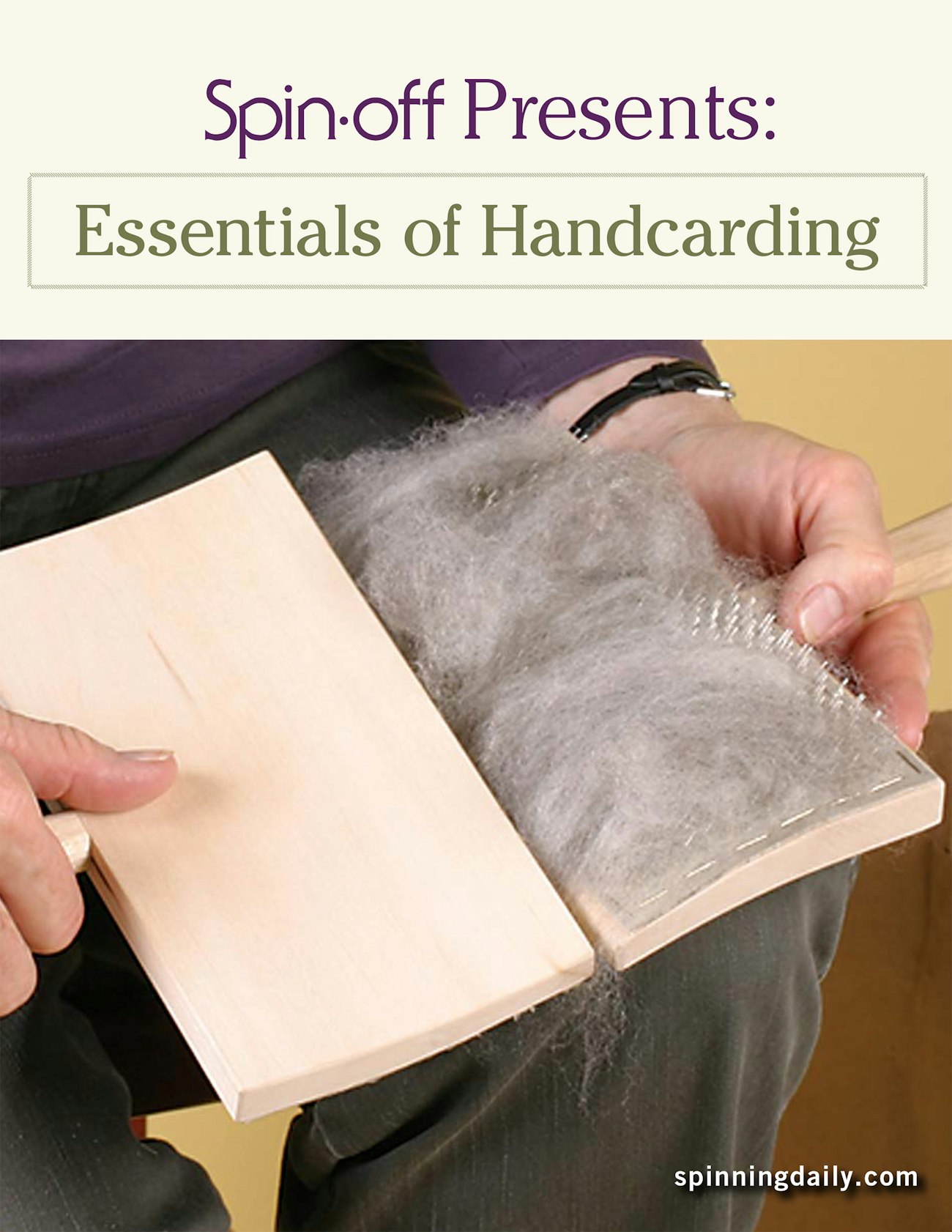With gorgeous prepared tops, roving, and batts, it’s easy enough to avoid handcarding if you really want to. But if it’s light, fluffy rolags you’ve been craving, then you’d better get carding. If that sounds like a daunting proposition, here are a few tips that might make it easier for you.
If it’s not going well, it might be the cards.
Today’s consumer has been conditioned to believe that an item is at its best right out of the box, but think of handcards as breaking in rather than wearing out. (In fact, if you can find really old antique cards—Norman Kennedy prefers nineteenth-century cotton cards—they may serve you best of all.) Before you gnash your teeth, not to mention the cards’ teeth, give new cards a little love. With sandpaper. In addition to preparing both of your cards, some experts recommend marking a left and right card—though some will say that you can tell just by looking which should be in which hand.
 For finer fibers, choose handcards with more teeth per inch, such as cotton cards. For medium wool, use wool cards, which have 72–112 teeth per inch. Photo by Ann Swanson
For finer fibers, choose handcards with more teeth per inch, such as cotton cards. For medium wool, use wool cards, which have 72–112 teeth per inch. Photo by Ann Swanson
Cotton has its own requirements.
Though cotton and wool can both be improved by carding, they require different techniques—and different cards. Cotton takes shorter strokes, tolerates less fiber on the cards, and is typically turned into a puni instead of a rolag. And speaking of punis . . .
There’s more to carding than rolags.
The rolag is the classic airy preparation produced by a hand card, but there are also punis (the traditional tight roll seen most often in cotton and a common product of the blending board) and another prep for which we haven’t seen an official name. Rolling the fibers off the card from side to side instead of end to end creates a preparation that is more aligned and less deliberately crossed than the traditional rolag. It’s also easier to pull into a roving, which we typically think of as coming from a batt or from a carding machine.

There are lots of classic carding tips from throughout Spin Off’s illustrious history in our eBook, Essentials of Handcarding. If you’ve been struggling with your own hand cards, you’ll find tips and expert advice here.
Originally published November 9, 2015; updated May 6, 2022 & February 26, 2025.

